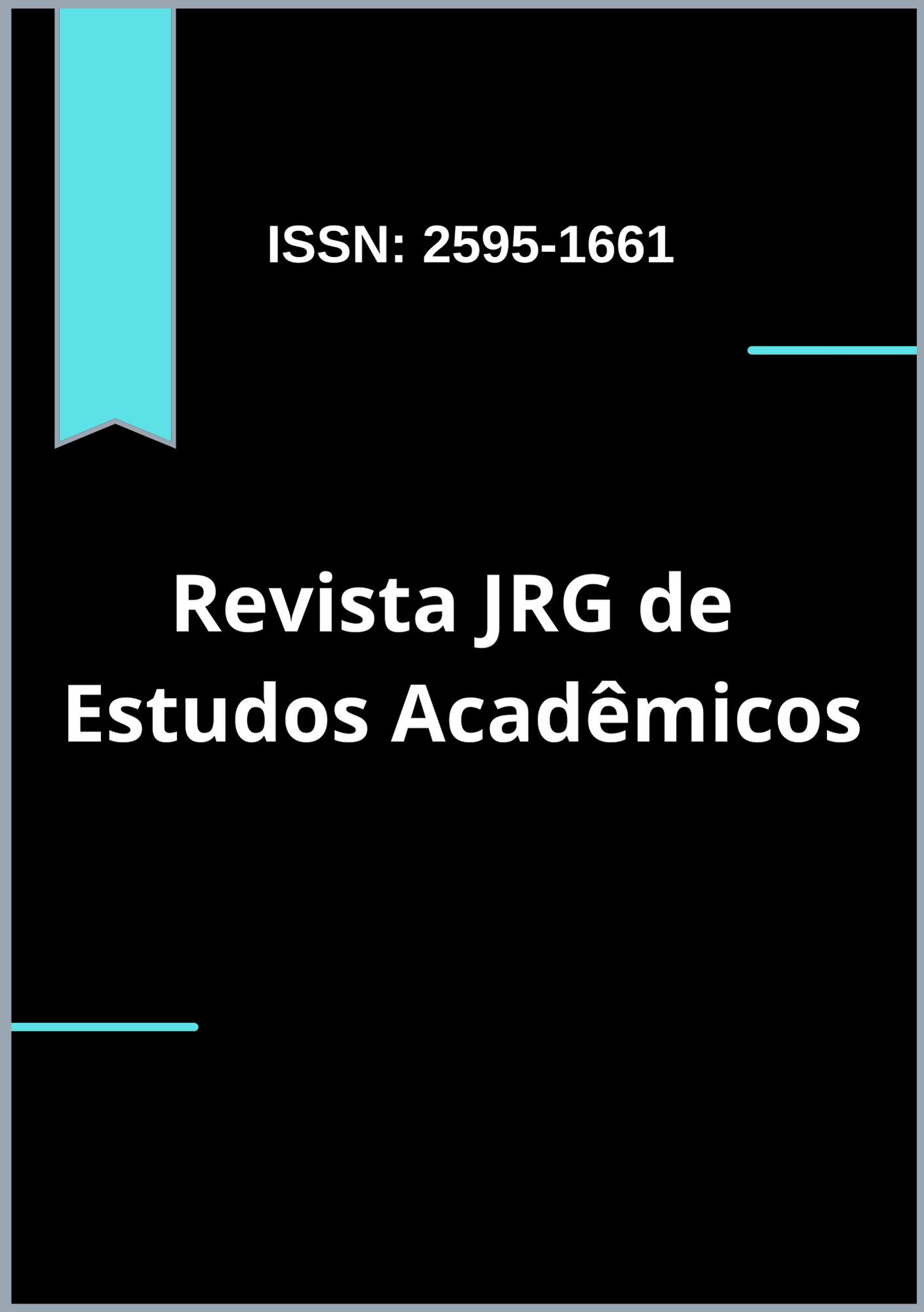Clinical deterioration in severe sepsis patients: a retrospective study
DOI:
https://doi.org/10.55892/jrg.v7i15.1453Keywords:
Deterioração clínica, Sepse, Gravidade do Paciente, Escore de Alerta PrecoceAbstract
Objectives: To analyze clinical deterioration in severely ill patients with complex comorbidities under sepsis code during hospital admission. Method: A cross-sectional, retrospective, descriptive, and qualitative study conducted between 2022 and 2023, with 80 participants. A generalized linear mixed model (GLMM) was applied as the statistical technique, and the F-test was used to assess the significance of the GLMMs, with the Kenward-Roger method being applied. Results: When the population was categorized into outcomes of ICU, death, and ICU with death, there was a 60% increase in the median NEWS 18 hours before and a 70% increase 6 hours before the sepsis code activation. Regarding the general sample and ICU patients, there was a greater than 60% increase 6 hours before the code. All NEWS elevation data for the same patient, 6 hours before the code, showed statistical significance for worse outcomes (p<0.001). Conclusion: NEWS, together with the ICCi, showed significance for the severely ill population under sepsis code, presenting a bimodal behavior in death outcomes, which suggests predicting clinical deterioration across the entire sample.
Downloads
References
BEKER KF. et al. National Early Warning Score 2 (NEWS2) to identify inpatient COVID-19 deterioration: a retrospective analysis. Clin Med (Lond). 2021 Mar;21(2):84-89.
BHATTACHARJEE P, EDELSON P, CHURPEK M. Identifying Patients With Sepsis on the Hospital Wards. Chest. 2017 Apr;151(4):898-907. doi: 10.1016/j.chest.2016.06.020. Epub 2016 Jul 1.
CAPAN M. et al. Display and perception of risk: Analysis of decision support system display and its impact on perceived clinical risk of sepsis-induced health deterioration. Health Informatics J. 2022 Jan-Mar;28(1).
CHARLSON M. et al. Charlson Comorbidity Index: A Critical Review of Clinimetric Properties. Psychother Psychosom. 2022;91(1):8-35.
CHURPEK M. et al. Causes, Diagnostic Testing, and Treatments Related to Clinical Deterioration Events among High-Risk Ward Patients. medRxiv. 2024 Feb 6:2024.
GUAN G. et al. The use of early warning system scores in prehospital and emergency department settings to predict clinical deterioration: A systematic review and meta-analysis. PLoS One. 2022 Mar 17;17(3):e0265559.
HESTER J. et al. The Modified Early Warning Score: A Useful Marker of Neurological Worsening but Unreliable Predictor of Sepsis in the Neurocritically Ill-A Retrospective Cohort Study. Crit Care Explor. 2021 May 18;3(5):e0386.
INADA-KIM M. et al. NEWS2 and improving outcomes from sepsis. Clin Med (Lond). 2022 Nov;22(6):514-517.
KO R. et al. Quick Sequential Organ Failure Assessment Score and the Modified Early Warning Score for Predicting Clinical Deterioration in General Ward Patients Regardless of Suspected Infection. J Korean Med Sci. 2022 Apr 25;37(16):e122.
KUMAR A. et al,. Sepsis triggers and tools to support early identification in healthcare settings: An integrative review. Aust Crit Care. 2023 Nov;36(6):1117-1128.
LAI, Jiangshan et al.GLMM. hp: an R package for computing individual effect of predictors in generalized linear mixed models. Journal of Plant Ecology, v. 15, n. 6, p. 1302-1307, 2022.
LI, Peng; REDDEN, David T. Comparing denominator degrees of freedom approximations for the generalized linear mixed model in analyzing binary outcome in small sample cluster-randomized trials. BMC medical research methodology, v. 15, p. 1-12, 2015.
LINNEN D. HU X. STEPHENS C. Postimplementation Evaluation of a Machine Learning-Based Deterioration Risk Alert to Enhance Sepsis Outcome Improvements. Nurs Adm Q. 2020 Oct/Dec;44(4):336-346.
MONZON, L. BONIATTI, M. Utilização do Modified Early Warning. Score na transferência intra-hospitalar de pacientes. Rev. bras. ter. intensiva 32 (3). Jul-Sep 2020.
NEVIERE,R. GONG, M. FINLAY G. Sepsis syndromes in adults: Epidemiology, definitions, clinical presentation, diagnosis, and prognosis. UpToDate. 2022.
NOGUCHI, Kimihiro et al. Nonparametric multiple comparisons. Behavior Research Methods, v. 52, p. 489-502, 2020.
PULLYBLANK A. et al. Implementation of the National Early Warning Score in patients with suspicion of sepsis: evaluation of a system-wide quality improvement project. Br J Gen Pract. 2020 May 28;70(695):e381-e388.
RENSEN, I. et al. Early detection of hospitalized patients with COVID-19 at high risk of clinical deterioration: Utility of emergency department shock index. Am J Emerg Med. 2021 Nov;49:76-79.
RONEY J, WHITLEY B, LONG J. Implementation of a MEWS-Sepsis screening tool: Transformational outcomes of a nurse-led evidence-based practice project. Nurs Forum. 2020 Apr;55(2):144-148.
SHAH PK. et al. A Simulated Prospective Evaluation of a Deep Learning Model for Real-Time Prediction of Clinical Deterioration Among Ward Patients. Crit Care Med. 2021 Aug 1;49(8):1312-1321.
SILVA, M. et al. Instrumentos e insumos utilizados por enfermeiros na detecção precoce de deterioração clínica. Revista Eletrônica Acervo Saúde, v. 24, n. 9, p. e16898, 11 set. 2024.
SOUZA, A. et al. Escores de alerta precoce em pacientes com suspeita ou diagnóstico de sepse: uma revisão integrativa. Revista enfermagem Uerj. Vol. 30 (2022).
STAGGS, Vincent S.; FELDMAN, Keith. Use of between-within degrees of freedom as an alternative to the Kenward–Roger method for small-sample inference in generalized linear mixed modeling of clustered count data. Communications in Statistics-Simulation and Computation, v. 52, n. 10, p. 5099-5109, 2023.
ZONNERVELD L. et al. Prognostic value of serial score measurements of the national early warning score, the quick sequential organ failure assessment and the systemic inflammatory response syndrome to predict clinical outcome in early sepsis. Eur J Emerg Med. 2022 Oct 1;29(5):348-356.











































